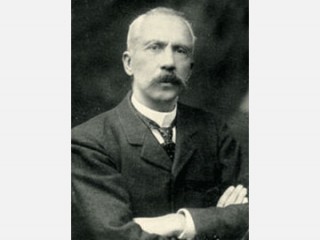
Charles Richet biography
Date of birth : 1850-08-25
Date of death : 1935-12-04
Birthplace : Paris, France
Nationality : French
Category : Science and Technology
Last modified : 2011-02-03
Credited as : Physiologist, discovery of the phenomenon of anaphylaxis, Nobel Prize in Physiology or Medicine
The French physiologist Charles Robert Richet was awarded the Nobel Prize in Physiology or Medicine for his discovery of the phenomenon of anaphylaxis.
Charles Richet, the son of Alfred Richet, a professor in the University of Paris, was born in Paris on Aug. 25, 1850. He studied medicine in Paris and intended to become a surgeon, but he soon abandoned surgery for physiology. He graduated at Paris as a doctor of medicine in 1869 and as a doctor of science in 1878. He became a lecturer in physiology in 1879 and in 1887 professor of physiology in the Faculty of Medicine at Paris.
In 1890 the phenomenon of antitoxic immunity was discovered, and in 1891 diphtheria antitoxin was first used in treating diphtheria. It was soon found that the guinea pigs used for testing diphtheria antitoxin became acutely ill if long intervals separated the test injections. About 1900, while cruising in tropical waters, Richet studied the poison of the tropical jellyfish, the Portuguese man-of-war. Working with Paul Portier, he found that injection of a glycerol solution of the poison produced the symptoms of poisoning by the jellyfish. On their return to France they studied the toxins of local jellyfish. They determined the minimum dose that was fatal for dogs several days after its injection. Smaller doses than this produced only transient effects. But if a dog that had been injected with a small dose received a similar small dose after an interval of several weeks, a violent reaction killed the dog.
By 1902 Richet had studied this phenomenon in different animals. Reactions produced by the injection of antitoxins or minute doses of toxins had already been called prophylactic, or protective. Richet realized that in this new phenomenon the first dose sensitized the animal, so that the second injection produced a violent reaction. The first dose was the opposite of prophylactic, and he therefore called the phenomenon anaphylaxis. He showed clearly that the first injection of an animal toxin sensitized the test animal to even a very small second injection, and that, with very small doses, the violent symptoms following the second injection were out of all proportion to the mild symptoms following the first. He also established that, to produce the violent reaction, there must be an interval of several weeks between the injections.
In 1903 Nicolas Maurice Arthus of Lausanne described the Arthus phenomenon. If a rabbit was injected subcutaneously with repeated doses of horse serum, no effect was produced by the subsequent injections at first, but as the interval from the first injection lengthened, the injection site became swollen, hardened, and ulcerous. In 1905 Richard Otto showed that it was not the toxin in the "diphtheria antitoxin" (at that time a mixture of toxin and antitoxin was used) that produced serious effects in guinea pigs injected with repeated small doses at long intervals, but the horse serum in which the toxin was contained. Further, the reaction depended not upon the dose but upon the time interval. It was soon shown that a guinea pig injected with horse serum showed no hypersensitivity to the serum of other animals, and also that specific reactions occurred after the injection of milk, egg, or muscle extract. It was thus conclusively demonstrated that Richet's anaphylaxis was due to the injection of any protein, whether or not it was toxic on the first injection.
In 1907 Richet showed that, if the serum of an anaphylactic dog was injected into a normal dog, the latter became anaphylactic. The anaphylactic state could therefore be passively transmitted, and it was an antigen-antibody reaction. He continued to study anaphylactic phenomena, and for his work he was awarded the Nobel Prize in 1913. Anaphylaxis is closely associated with serum sickness and allergy, and later investigations of allergic diseases stem from Richet.
















